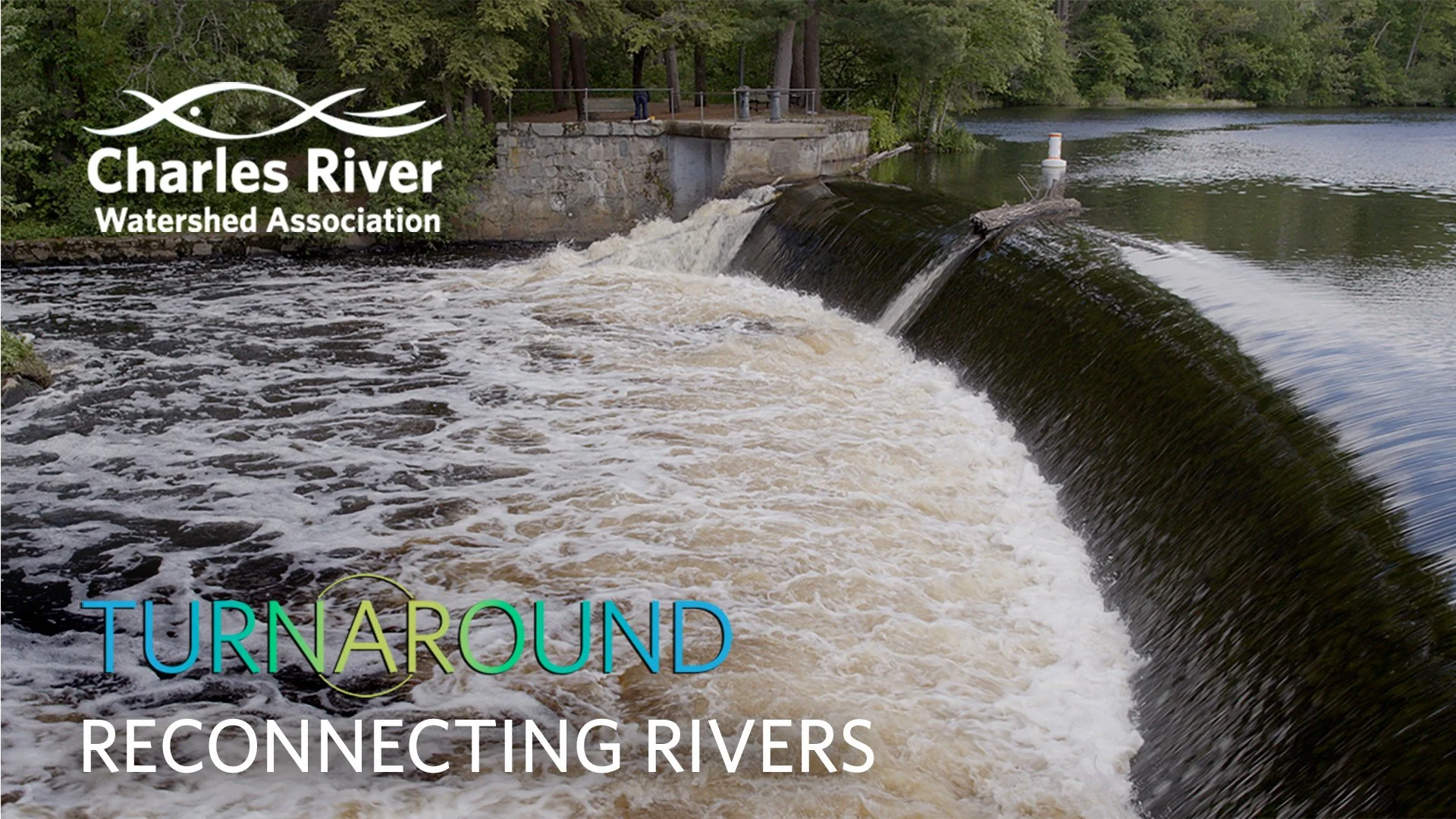Thousands of dams have been built in Massachusetts, each with an important purpose.
But these needs can change while the dams remain.
Series Number 4.0
Length: 17 mins 42 secs
Languages: Subtitles available in English, Spanish, and Chinese. Press the CC button in the video player.
Massachusetts has some of the oldest dam locations in the United States. Dams were critical infrastructure for colonists and the factories of the Industrial Revolution. They were often built in places that disrupted the lives of the indigenous people who had rivers at the center of their worlds. Over time electricity replaced the need for water power and the dams lost their original purpose, but they never went away.
Dams for rivers, says Hartman Deetz, are like a blockage in your arteries. A river’s health can be severely impacted by slowing or stopping the flow of its water. Slow water heats up, allowing invasive plants and bacteria to flourish, and unbalances the amount of oxygen in the water that fish need to breathe. They block the passage of migratory fish, like herring and shad. And old, unmaintained dams put everything below their pooled water at risk of flooding.
In this episode, a collaboration with the Charles River Watershed Association, we meet the activists and government officials working to remove the old dams on their nearby rivers. Hartman Deetz describes the critical importance of rivers to the Mashpee Wampanoag. Lisa Kumpf, of CRWA, talks about the history of Eagle Dam and the problems around it. John Gannon, Town Councilor in Watertown, MA, shares his history of growing up near the Watertown Dam. Claire Rundelli and Jillian Wilson-Martin of the Town of Natick, discuss how the town came to the decision to remove their dam. Sam Woods of the North and South Rivers Watershed Association and Beth Lambert, the Director at Division of Ecological Restoration, describe what it means to take down a dam and what happens afterward. And Danielle Frank of the Hupa and Yurok tribes talks about how they removed the dams impacting the salmon runs in Northern California.
Subscribers have access to additional media relating to each film’s content, including embed codes, still images, educational materials, video clips, interview transcripts, and cutdowns (short versions of each film) — when available. Learn More Here

